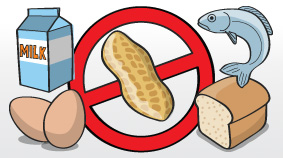Children need at least 8 - 9 hours of sleep per night. A lack of sleep can have bad effects on children's health in academics, during extracurricular activities, and in social relationships. According to a study conducted by Healthy Active Living Research Group, almost a third of children in Canada are sleep-deprived. The reason behind this is believed to be a lack of physical tiredness and too much of screen time.
As per Dr. Mark Tremblay, lead researcher, Healthy Active Living Research Group, children are not getting enough shut-eye because of TVs in their room, due to their cell phone, or because they didn’t do much exercise or physical activity and are not fatigued.
The study also reveals that the children wake up slightly fatigued, withdraw from any kind of physical work, relaxing more and then of course are not physically tired, to get a proper sleep. The study involved the kids of different age group and a participation report card was prepared. According to which, grade D was given based on conclusions that 9% of kids aged between 5 - 17 years get the suggested minimum of 60 minutes of heart-pumping activity per day.
The study also denotes that nearly 79 % of kids aged between 5 – 13 year gets 9 – 11 hours of sleep per night; while 68% of children aged between 14 – 17 year gets 8 - 10 hours of sleep per night.
The lowest grade was F for an inactive behaviour, where only 24% of kids aged between 5 – 17 year coming under the suggested maximum of 2 hours of leisure screen time per day. As per the report, high school students spent almost 8 hours in front of TV screens and hence sleep less.
The effects of less sleep can be very negative, and can lead to depression. Moreover, too little sleep can cause obesity, hyperactivity, and slow cognitive development in children. The children are not connected with nature, the outdoors activities, communities and have an excessive link with screens and cell phones.
The sleep problem or lack of sleep in children is very complex and it’s not easy to change the grade D to A. Through this study, the researchers are trying to create an awareness among key stakeholders including parents, child’s physicians and school to find a long-term solution to the problem. They also promote the less use of screens and high amount of physical activity for children.
You can learn more about your child’s good health by joining Shaw Academy’s Child Nutrition program. You can also read Shaw Academy Reviews online on their Facebook page.



















